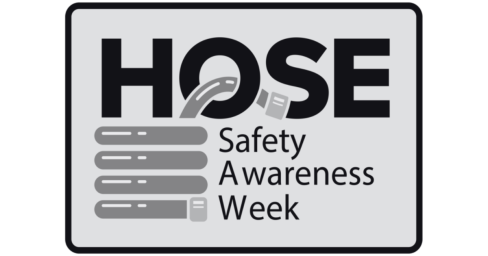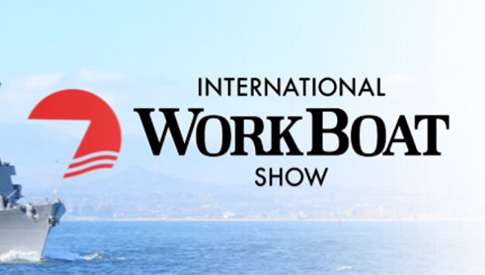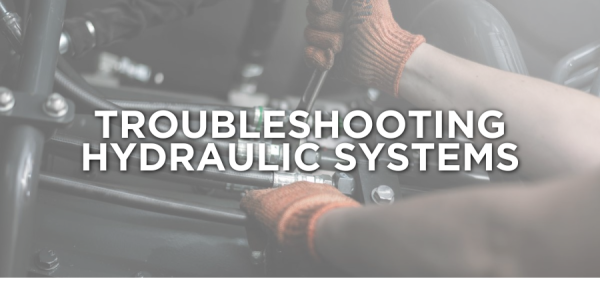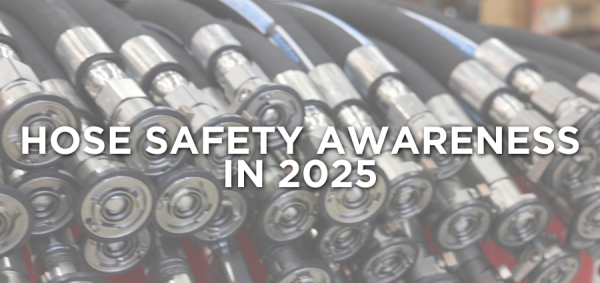Every year, the National Association for Hose and Accessories Distribution (NAHAD) hosts Hose Safety Awareness Week (HSAW) to bring industry-wide attention to an often-overlooked issue: hose safety. Hose assemblies are critical engineered components that support operations in industries such as construction, manufacturing, oil and gas, and transportation. When hoses are treated as consumables rather than precision parts, the risk of failure increases, leading to unplanned downtime, safety incidents, and unnecessary costs.

HSAW 2025 provides an opportunity to highlight the importance of following best practices for hose assembly, installation, and maintenance. For companies that depend on hydraulic and industrial hose assemblies, awareness is not just about safety. It is also about compliance with standards, protecting equipment investments, and maintaining a reliable operation.
Hidden Risks of Hose Failure
Hose failure may seem like a small issue, but the consequences can be significant. A leaking or burst hydraulic hose can bring an entire production line to a standstill, costing thousands of dollars in downtime. In construction and field operations, hose failure can delay projects and damage equipment.
Even more serious is the risk to worker safety. High-pressure hydraulic fluid leaks can cause severe injuries, and the sudden loss of hydraulic power can lead to dangerous equipment malfunctions. Environmental risks are another factor. Spilled fluids can create hazards, damage surrounding ecosystems, and result in costly cleanup efforts.
Understanding these risks reinforces why hose assemblies must be selected, installed, and maintained according to industry standards. Safety is not just about protecting people. It is also about safeguarding reputation, ensuring compliance, and reducing long-term operational costs.
Industry Standards and Compliance Requirements
Hose assemblies are not simply a matter of convenience. They are regulated components with specific design, assembly, and usage standards. The most recognized guidelines come from the NAHAD Hose Safety Institute, the Society of Automotive Engineers (SAE), and the International Organization for Standardization (ISO). Each provides requirements that ensure hoses can perform reliably under the pressures, temperatures, and environmental conditions in which they are used.
For example, SAE J517 specifies construction and performance requirements for hydraulic hoses, while ISO 17165-2 addresses guidelines for proper selection, routing, and assembly. NAHAD’s Hose Safety Institute combines these and other standards into a framework designed to reduce the risk of premature hose failure.
Compliance with these standards is not simply a formality. It helps prevent failures caused by mismatched components, improper assembly techniques, or inadequate testing. Organizations that overlook compliance may experience higher failure rates and unnecessary safety risks. By following recognized standards, companies create a foundation of reliability that protects both personnel and equipment.
Learn more here about SIT’s commitment to excellence in ISO-certified manufacturing.
Hose Safety and Environmental Responsibility
While hose safety is often discussed in terms of operational reliability and worker protection, its environmental impact is equally important. Hydraulic fluid leaks, chemical spills, and hose ruptures can contaminate soil and water, harm local ecosystems, and trigger costly remediation efforts. In industries with strict environmental regulations, even minor hose failures can result in fines or reputational damage. Implementing proper hose selection, routing, and maintenance practices helps prevent these incidents and supports broader sustainability goals. By reducing waste, minimizing fluid loss, and extending hose service life, companies contribute to more responsible resource use. Hose safety isn’t just a technical issue, it’s a key part of environmental stewardship.
Best Practices for Hose Safety
Even when a hose assembly meets all applicable standards, how it is selected, installed, and maintained has a direct impact on performance and service life. Implementing a structured hose safety program reduces the likelihood of failure and ensures consistency across operations.
1. Selection
The starting point for hose safety is proper selection. Engineers and maintenance teams should always apply the STAMPED method: Size, Temperature, Application, Material, Pressure, Ends, and Delivery. This ensures the hose is rated correctly for the environment and duty cycle. Selecting the wrong hose type or fitting often leads to premature wear or dangerous malfunctions.
2. Installation
Incorrect routing is one of the most common causes of hose failure. Hoses should not be twisted, bent beyond their minimum bend radius, or routed in a way that exposes them to abrasion. Clamps and protective sleeves should be used where necessary to prevent wear and vibration damage. Proper torque specifications must be followed during fitting installation to avoid leaks or component separation.
3. Inspection
A consistent inspection schedule is essential. Visual checks should look for cracks, abrasions, bulges, or leaks. End fittings must be examined for corrosion or signs of loosening. More advanced inspection programs may include pressure testing and tracking hose life cycles to predict replacement intervals.
4. Replacement
All hoses have a finite service life. Replacing hoses before they fail is one of the most effective strategies for reducing downtime and avoiding safety incidents. A preventive maintenance schedule based on application severity and historical performance data helps extend equipment life while minimizing unexpected failures.
When companies implement these best practices, hoses function as intended and become reliable components rather than points of vulnerability.
The Role of Training and Certification
Even the most carefully selected and assembled hose will not perform reliably if it is handled by untrained personnel. Hose safety training ensures that maintenance teams, technicians, and operators understand both the risks of improper practices and the correct procedures to follow.
Organizations such as NAHAD’s Hose Safety Institute provide structured training and certification programs. These programs focus on assembly procedures, pressure testing, installation guidelines, and inspection methods. When teams receive formal training, they gain the skills to recognize potential hazards early and to assemble hoses that comply with international standards.
Certification also demonstrates to customers and regulators that an organization values safety and quality. In highly regulated industries, this can be the difference between winning and losing a contract. Training and certification create consistency, reduce variability, and establish confidence in hose assemblies across multiple sites.
Hose Safety and Operational Efficiency
Hose safety is often framed as a matter of protecting people and preventing accidents. While this is the most important outcome, it is also important to recognize the operational benefits. Equipment that relies on properly managed hoses operates more efficiently, requires fewer emergency repairs, and delivers longer service life.
From an operational perspective, hose safety is directly connected to productivity. When hoses fail, operations stop. When hoses are managed correctly, downtime is minimized and resources can be focused on production rather than emergency maintenance. Safety and efficiency are not separate priorities but interconnected outcomes.
The Strategic Importance of Hose Safety Awareness Week
Hose Safety Awareness Week is more than an annual reminder. It is an opportunity for organizations to evaluate their current practices, identify gaps, and strengthen their safety culture. By engaging in this industry initiative, companies signal their commitment to protecting employees, reducing downtime, and maintaining compliance with global standards.
For leaders in the field, participation in HSAW 2025 can also support recruitment and retention. Employees want to work for companies that prioritize safety and demonstrate responsibility in their operations. Promoting involvement in HSAW reinforces trust with employees, customers, and stakeholders.
Take Action During HSAW 2025
Whether you’re a facility manager, technician, or safety officer, Hose Safety Awareness Week is the ideal time to evaluate your hose safety protocols and reinforce a culture of reliability. Explore the Hose Safety Institute’s training and certification programs, review your compliance with industry standards, or conduct a facility-wide inspection to identify potential risks. While many of NAHAD’s resources are available through membership, engaging with their guidance and participating in HSAW 2025 can help your organization stay ahead of safety challenges. Small steps today can prevent major failures tomorrow and build a stronger, safer operation for the future.
Conclusion: Building a Safer and More Reliable Future
Hose assemblies are critical engineered components that should never be treated as expendable consumables. By following recognized standards, implementing best practices, investing in training, and adopting hose management programs, companies reduce risk and gain long-term operational reliability.
Hose Safety Awareness Week 2025 provides the ideal platform to highlight these efforts. Organizations that prioritize hose safety not only protect their people and equipment but also strengthen their reputation as responsible and reliable industry partners.
Contact us if you have any questions or if you’d like to learn more about SIT’s involvement in hose safety.
Frequently Asked Questions
1. Why is hose safety often overlooked?
Because hoses look simple, many people assume they’re easily replaceable. In reality, they are precision components that require careful selection and handling.
2. What are the first signs of hose failure?
Cracks, leaks, bulges, abrasions, or loose fittings are common warning signs that a hose needs attention.
3. How often should hoses be replaced?
It depends on the application and usage conditions. Following a preventive maintenance schedule based on operating environment and historical data is best.
4. How can companies get started with hose safety training?
Organizations like NAHAD’s Hose Safety Institute offer structured programs that cover assembly, inspection, and replacement practices.




